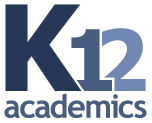- Education Topics
- Achievement Gap
- Alternative Education
- American Education Awards
- Assessment & Evaluation
- Education during COVID-19
- Education Economics
- Education Environment
- Education in the United States during COVID-19
- Education Issues
- Education Policy
- Education Psychology
- Education Scandals and Controversies
- Education Reform
- Education Theory
- Education Worldwide
- Educational Leadership
- Educational Philosophy
- Educational Research
- Educational Technology
- Federal Education Legislation
- Higher Education Worldwide
- Homeless Education
- Homeschooling in the United States
- Migrant Education
- Neglected/Deliquent Students
- Pedagogy
- Sociology of Education
- Special Needs
- National Directories
- After School Programs
- Alternative Schools
- The Arts
- At-Risk Students
- Camps
- Camp Services
- Colleges & Universities
- Counties
- Driving Schools
- Educational Businesses
- Financial Aid
- Higher Education
- International Programs
- Jewish Community Centers
- K-12 Schools
- Language Studies
- Libraries
- Organizations
- Preschools
- Professional Development
- Prom Services
- School Assemblies
- School Districts
- School Field Trips
- School Health
- School Supplies
- School Travel
- School Vendors
- Schools Worldwide
- Special Education
- Special Needs
- Study Abroad
- Teaching Abroad
- Volunteer Programs
- Youth Sports
- For Schools
- Academic Standards
- Assembly Programs
- Blue Ribbon Schools Program
- Educational Accreditation
- Educational Television Channels
- Education in the United States
- History of Education in the United States
- Reading Education in the U.S.
- School Grades
- School Meal Programs
- School Types
- School Uniforms
- Special Education in the United States
- Systems of Formal Education
- U.S. Education Legislation
- For Teachers
- Academic Dishonesty
- Childcare State Licensing Requirements
- Classroom Management
- Education Subjects
- Educational Practices
- Interdisciplinary Teaching
- Job and Interview Tips
- Lesson Plans | Grades
- Professional Development
- State Curriculum Standards
- Substitute Teaching
- Teacher Salary
- Teacher Training Programs
- Teaching Methods
- Training and Certification
- For Students
- Academic Competitions
- Admissions Testing
- At-Risk Students
- Career Planning
- College Admissions
- Drivers License
- Educational Programs
- Educational Television
- High School Dropouts
- Higher Education
- School Health
- Senior Proms
- Sex Education
- Standardized Testing
- Student Financial Aid
- Student Television Stations
- Summer Learning Loss
Home | Lesson Plans | Water and the Water Cycle |
Water and the Water Cycle
Author: Kathy Franceschini
Lesson Plan:
|
Name: Kathy Franceschini |
Date: March 24, 2010
|
|
|
Unit Topic: Water and the Water Cycle Lesson Topic: How Water Interacts with Different Materials |
||
|
Target Concept(s): property, observe, absorb, bead, water, transparent, materials |
Essential Question(s): What are the properties of water that we can observe? Why does water act differently when dropped on different materials? |
|
|
Focus Question(s) for Lesson: How does water act on different surfaces?
|
||
|
Target Competencies (Addressing Standards):
Science Standard 1 - Scientific Inquiry: S1.1a Observe and discuss objects and events and record observations
Science Standard 4 - The Physical Setting: 3.2c - Changes in the properties or materials of objects can be observed and described.
ELA Standard 1: Students will read, write, listen and speak for information and understanding.
|
Sequence of Student Performances: 1. Students brainstorm descriptions of what they know so far about water. (What does it look like?) The word property is introduced and added to Science Word Bank. 2. Students look at four different materials (aluminum foil, wax paper, paper towel and writing paper) and make predictions about whether water will act differently when placed on each of the materials. 3. Pairs of students work together to place a drop of water on each of the materials and observe and record how the water acts on each material. 4. Student groups share with the class how they observed the water act on each material. (3 groups will share about one material, so that every group shares one of their observations) 5. Groups’ observations are recorded on the SMART Board. As students describe the water the words “absorb” and “beads up” will be introduced and added to the Science Word Bank. 6. Based on what they just observed, students will discuss how water acts on different materials. 7. Students individually answer in writing how water acts on different surfaces. 8.Teacher plays water properties video clip from http://www.teachertube.com/viewVideo.php?title= Water_Properties&video_id=117051 Class discussion on video. |
|
|
Materials: SMART Board, water, droppers, cups, wax paper, aluminum foil, paper towels, writing paper, student papers, pencils |
||
|
Assessment: v Students’ written responses to the final question, “How does water act on different surfaces?” will be assessed for an understanding that water acts differently on different materials. v Students’ written and illustrated observations of how the water acts on different materials will be assessed. v Students’ group work and verbal responses will be informally assessed. |
||

